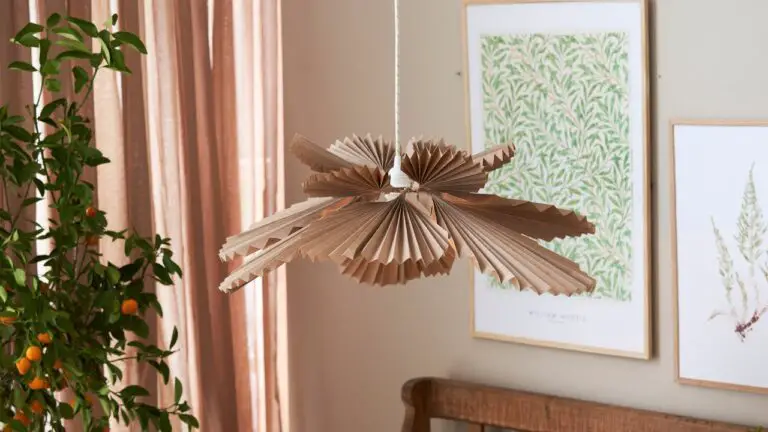Are you tired of the same old furniture and decor? Look no further! Our latest article showcases innovative designs using industrial remnants, proving that beauty can be found in unexpected places. From repurposed machinery to salvaged materials, these unique pieces will add a touch of industrial chic to any space. Get ready to be inspired by the creativity and ingenuity of these one-of-a-kind designs.
What are some examples of innovative designs using industrial remnants?
One example of innovative design using industrial remnants is repurposing old shipping containers into affordable housing units. These containers are durable, stackable, and easily transportable, making them an ideal solution for creating sustainable and cost-effective housing options. By transforming these industrial remnants into livable spaces, designers are able to address both environmental concerns and affordable housing shortages.
Another creative use of industrial remnants is turning old factory machinery into unique and functional furniture pieces. By salvaging gears, conveyor belts, and other industrial parts, designers are able to create one-of-a-kind pieces that add a touch of industrial charm to modern interiors. This upcycling process not only reduces waste but also gives new life to forgotten industrial relics.
In addition, some designers are using discarded metal pipes and beams to create striking architectural features in urban spaces. By repurposing these industrial remnants into sculptures, fences, or even lighting fixtures, designers are able to add a touch of industrial aesthetic to public spaces. These innovative designs not only beautify the urban landscape but also serve as a reminder of the history and heritage of the industrial age.
How can industrial remnants be repurposed for creative design projects?
Industrial remnants, such as old machinery parts or abandoned factories, can be repurposed for creative design projects in a variety of innovative ways. By thinking outside the box and seeing the potential in these discarded materials, designers can transform them into unique pieces of furniture, artwork, or even architectural elements. For example, old gears and cogs can be welded together to create a striking industrial-style coffee table, while rusted metal sheets can be used to make a statement wall art piece. The key is to look at these remnants with a fresh perspective and envision how they can be repurposed to add character and charm to a design project.
Moreover, repurposing industrial remnants not only adds a touch of creativity to a project but also contributes to sustainability by reducing waste and giving new life to materials that would otherwise end up in a landfill. By incorporating these remnants into design projects, designers can create pieces that are not only visually appealing but also have a unique backstory and history. Whether it’s repurposing old conveyor belts into stylish belts or turning abandoned warehouses into trendy loft apartments, the possibilities are endless when it comes to using industrial remnants for creative design projects. Ultimately, repurposing these remnants allows designers to showcase their creativity and make a positive impact on the environment at the same time.
Are there any sustainable benefits to using industrial remnants in design?
Industrial remnants, such as reclaimed wood and repurposed metal, offer a multitude of sustainable benefits when used in design. By incorporating these materials into new products, designers are able to reduce the demand for virgin resources and minimize the environmental impact of industrial waste. Additionally, the use of industrial remnants promotes a circular economy, where materials are reused and repurposed, rather than ending up in landfills. This not only conserves natural resources, but also reduces energy consumption and greenhouse gas emissions associated with the production of new materials.
Furthermore, incorporating industrial remnants into design can also result in unique and visually striking products. The weathered patina of reclaimed wood or the industrial charm of repurposed metal can add character and authenticity to a design, creating a sense of history and sustainability. This not only appeals to environmentally-conscious consumers, but also adds a sense of value and craftsmanship to the final product. Overall, the sustainable benefits of using industrial remnants in design extend beyond just environmental considerations, offering a creative and compelling approach to sustainable design.
Where can I find inspiration for incorporating industrial remnants into my design projects?
When looking for inspiration to incorporate industrial remnants into your design projects, consider visiting salvage yards or architectural salvage stores. These places often have a variety of unique and interesting pieces such as old machinery parts, metal beams, and vintage signage that can add a touch of industrial flair to your designs. By repurposing these items, you can create one-of-a-kind pieces that will give your projects a distinct and edgy look.
Another great source of inspiration for incorporating industrial remnants into your designs is to explore abandoned factories, warehouses, or other industrial spaces. These locations are often filled with a treasure trove of materials and objects that can be salvaged and used in your projects. From old machinery and equipment to weathered wood and rusted metal, these spaces offer endless possibilities for creating industrial-inspired designs that are both visually striking and full of character.
Additionally, consider researching industrial design trends and styles to gather inspiration for your projects. Look at how other designers have successfully incorporated industrial remnants into their work and take note of the techniques and materials they have used. By staying informed and keeping an open mind, you can find fresh and innovative ways to incorporate industrial elements into your designs, creating spaces that are not only visually appealing but also tell a story of the past.
Transforming Waste into Wonder: Sustainable Design Solutions
In today’s world, the issue of waste management has become increasingly pressing. However, innovative designers and engineers are finding ways to transform waste into wonder through sustainable design solutions. By reimagining the use of materials and embracing the principles of circular economy, these visionaries are creating products and structures that not only minimize waste but also contribute to a more sustainable future.
One such example of sustainable design solutions is the utilization of recycled plastic in construction materials. By repurposing plastic waste into durable and versatile building components, architects and builders are not only reducing the amount of plastic ending up in landfills or oceans but also creating structures that are more cost-effective and environmentally friendly. This approach not only addresses the issue of waste management but also promotes a circular economy by closing the loop on plastic consumption.
Another inspiring example comes from the fashion industry, where designers are using discarded textiles and materials to create stylish and eco-friendly clothing and accessories. By embracing the concept of upcycling, these designers are not only reducing the environmental impact of the fashion industry but also promoting a more sustainable and ethical approach to consumerism. This innovative use of waste materials demonstrates that sustainable design solutions can be both practical and aesthetically appealing, inspiring a shift towards a more sustainable and circular fashion industry.
Industrial Remnants Reimagined: Eco-Friendly Innovations
Discover a new era of sustainable design with industrial remnants reimagined as eco-friendly innovations. From upcycled materials to repurposed machinery, these innovative solutions are not only reducing waste but also creating unique and stylish products. Embrace the beauty of sustainability and be part of the movement towards a greener future.
By repurposing industrial remnants and incorporating them into innovative designs, we not only reduce waste and environmental impact, but also create unique and visually striking pieces that tell a story of sustainability and creativity. These upcycled creations not only add a touch of individuality to our spaces, but also serve as a reminder of the endless possibilities that come with thinking outside the box and embracing the beauty of unconventional materials. Join the movement towards a more sustainable and stylish future by exploring the world of innovative designs using industrial remnants.



